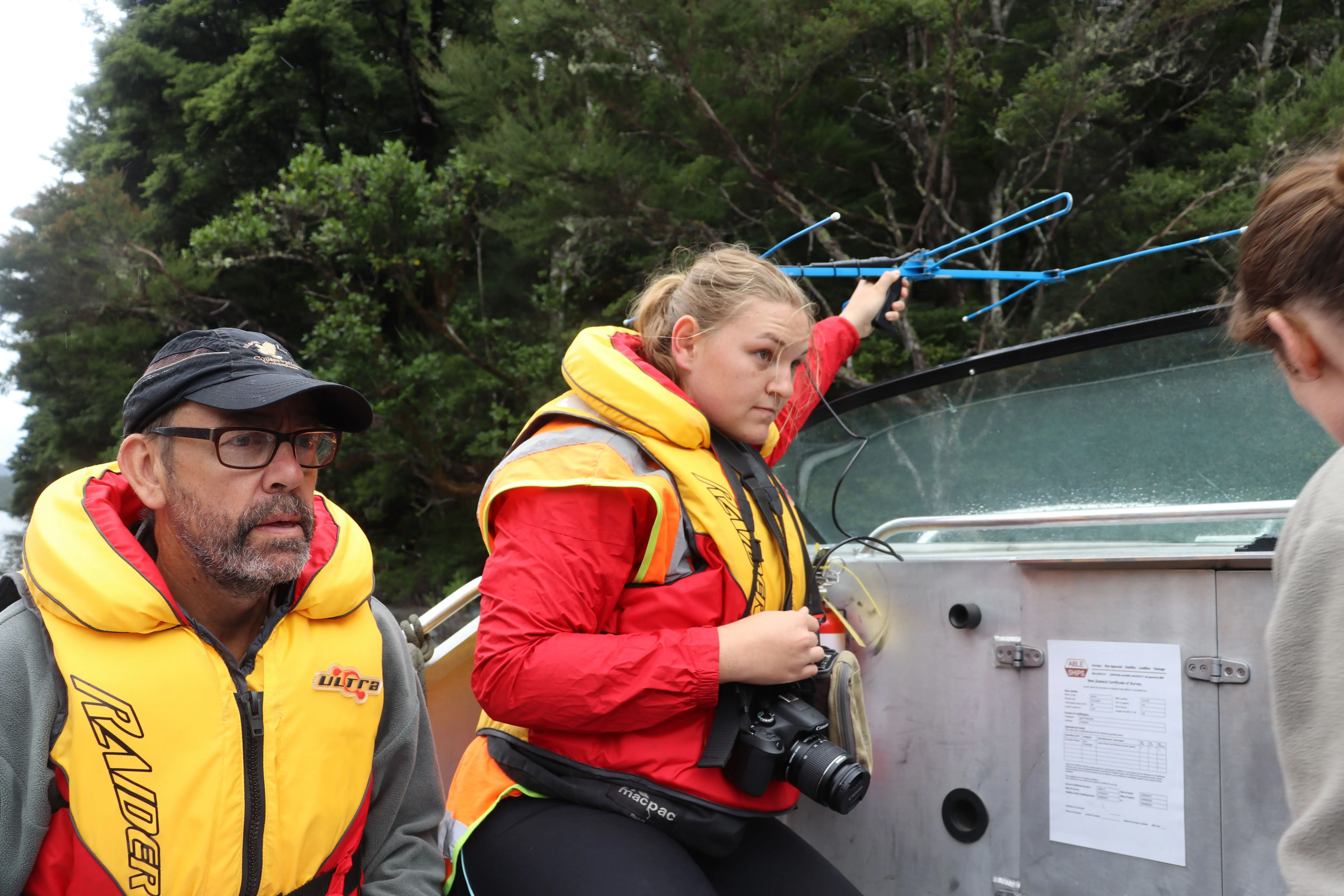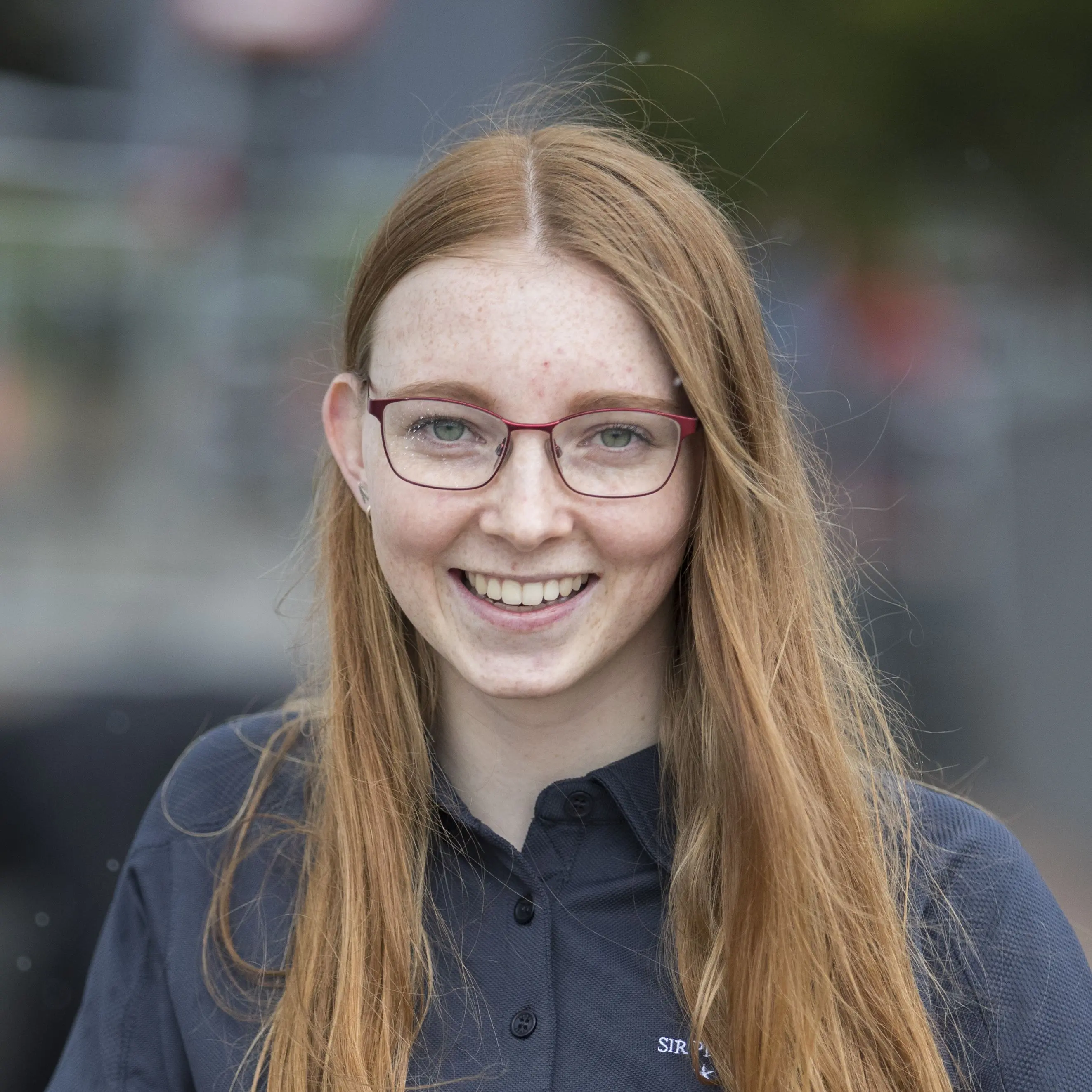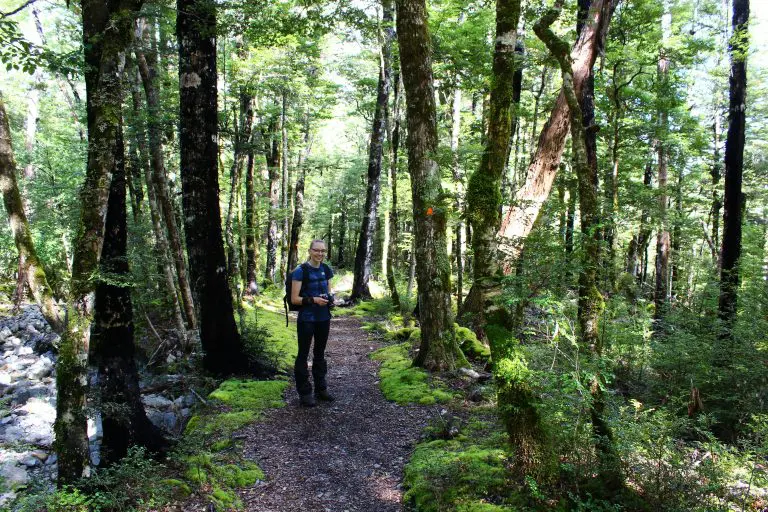Our journey here started off with two flights and a weekly grocery stop in Nelson before driving a little over an hour to Saint Arnaud. During this first week we have been based around the Saint Arnaud Ranges, Lake Rotoiti and the local DOC office, workshop and information centre. We are staying at Cummings Cottage, directly across from work (we can walk there in under 30 seconds). Cummings Cottage is DOC staff accommodation which can house up to eight people, it features a lovely spacious lounge with a mini book collection, a few board games and puzzles and a tv which was struck by lightning in a storm last year so no longer operates. We have the most gorgeous views of the Saint Arnaud Range out our window and a 5 minute walk takes us down to what I like to call the most picturesque lake I have seen, Lake Rotoiti. Although we are very isolated here; the nearest grocery shops being over an hour away, we are in prime location for many amazing short and long walks which we have started to tick off.
A little bit of a backstory
The Rotoiti Nature Recovery Project (a mainland island recovery and restoration project) was established in 1997. The programme focusses on the control of non-native (introduced) species in the Nelson Lakes National Park. These include stoats, rats, possums and both the German and Common wasp species. The reason we require introduced species control in Aotearoa is due to our island’s history after breaking off from Gondwana more than 85 million years ago. The fauna which had survived long enough to evolve in our country had done so with avian (flighted) predators instead of ground dwelling predators. These species developed techniques to avoid the avian predation such as camouflage, freezing when being startled and nocturnal behaviour. This meant that when other predators (ground dwelling) were introduced, our native species were easy prey due to these unsuitable adaptations such as freezing when being startled. This meant that many of our native species faced decline faster than evolution could adapt. The introduced species we see today have detrimental effects on our native flora and fauna. Stoats, rats and possums feed on our native birds, their young and eggs, possums eat many of our native flora species and wasps feed on the honey dew supply which is an important food source for our native birds, many insects and lizards. Using a combination of traps and baits we can control these introduced species.
Working as a DOC ranger in Nelson Lakes, National Park
For our first day of work we walked part way up Saint Arnaud Range where we cleared over 100 wasp baits each (Marie and I). This was to signal the end of a large wasp operation here in Nelson Lakes to control the introduced German (Vespula germanica) and Common (Vespula vulgaris) wasps. The bait we were using was Fipronil (also used in flea treatment on domestic pets) mixed with raw, rotten chicken to attract the wasps. The baits work when the wasps take the bait back to their nest to feed and ultimately kill the colony. The baits had been left out in the bait stations for a week before we cleared them. We each did a line of baits (62 stations) alone following a map and a GPS route along a cut track (non-public track). I learnt very quickly the horrible feeling of walking through bush lawyer without noticing it being wrapped around my leg/arm (pure evil in a plant… it leaves spines and puncture wounds if you try to break free). I also learnt the importance of a GPS, especially when the tracks are dense, and you can’t see your track markers… I may have gotten momentarily lost, but I am thankful for my GPS that led me back. We were out in the field from 8:30am to 2:30pm this day before heading back to the office to discuss data input and our plans for the next day.
On the second day it was stormy and pouring with rain, so we stayed in the DOC workshop. Our day began with creating lures for stoat/rat tracking tunnels (tunnels which critters can walk through with an ink pad in the middle which records their footprints. From these tunnels we will be able to compare Lake Rotoiti (with introduced species control) and Lake Rotoroa (without control) species present and therefore the effect of the control. These lures were salted rabbit put into little wire pouches (we made 110). We then labelled the tracking tunnel ink pads with the specific tunnel number and line letters/numbers. After this we tidied up the workshop and moved into the office to design Murchison AMP posters for the DOC stall. My poster was based on attracting lizards to your garden.
The third day we took one of the DOC boats (Kehu) out to the end of Lake Rotoiti. We stopped along the way to monitor the activity of a Great Spotted kiwi which was nesting to check that it was still living happily. We monitored from the boat, the equipment we used tracks 14 days’ worth of activity. The way we receive the data is through a series of beeps. These record the number of minutes the kiwi is active each night, followed by five break beeps to signal a different night. The data for the 14 days repeats every 3 minutes, we recorded these on a datasheet. Once we reached the end of the lake we disembarked the boat to start our first traplines. My trapline consisted of 30 DOC200 traps designed to be set off by stoats and rats. These are very humane traps and the boxes are specially designed to avoid capturing unwanted species. These traps are set with an egg as a visual lure and salted rabbit squares as a scent lure. They are checked, cleaned and reset once a month, but when the capture rate is above 20% they are checked two-weekly. After completing my trapline, another ranger and I went in search of pigs in the area beyond the track end. We followed very fresh tracks and trace, but did not come across the pigs creating them so headed back to the boat. Back at the workshop we cleaned out the boat bilge as a fuel tank had been leaking while were out in the field.
Due to Waitangi weekend we had Saturday to Tuesday off work. We decided to jump right in to ticking off some of the beautiful walks in the area. On Saturday we probably started with the hardest of those walks- The Saint Arnaud Range (trying to get fit fast obviously). What was meant to take five and a half hours return turned into a seven hour walk and two hours of stops, but I am so proud to be able to say I did it. The 360-degree view was absolutely spectacular! To achieve this, we walked along the ridge at the top of the Saint Arnaud Range. We stayed up top for about an hour taking in the view and making the most of the many photo opportunities. We also found a trapline up there, so we checked them while we were there too. The downhill was quite tough especially coming down from the ridge to Parachute Rock which was mainly scree slope (loose rocks). To celebrate our big day, we visited the local hotel restaurant where we ate a glorious feast of pizza, fries and risotto.
We have also ticked off the Lakehead, Honeydew, Bellbird and Blackhill tracks this weekend.
During the weekend we had the ‘Hotshots’ (Four American firefighters) staying at Cummings Cottage. We played cards (Rummy) and heard lots of incredible stories about their work in America and how they ended up here in Aotearoa. During their time here, they were tasked with creating tracks from scratch out in some very isolated areas. They stayed for two nights before moving on to Barrytown.
The people here both locals and those passing through are so friendly, always keen to have a chat and to tell us their unique stories. I’m loving Nelson Lakes so far, due to no Wi-Fi/ township it has really made me step outside, walk more, read more and find new ways to fill the time.
Stay tuned for next week’s adventures!


Sian Moffitt
BLAKE DOC Ambassador 2017


